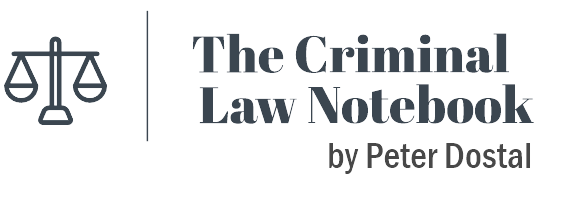Example Jury Selection Instructions: Difference between revisions
No edit summary |
|||
| (2 intermediate revisions by the same user not shown) | |||
| Line 86: | Line 86: | ||
An instruction that explains how to assess whether the potential juror may be disqualified for familiarity with persons in the trial should include:<ref> | An instruction that explains how to assess whether the potential juror may be disqualified for familiarity with persons in the trial should include:<ref> | ||
see {{ | see {{CanLIIRx|Corbière|gvddw|2016 ONSC 6820 (CanLII)}}{{atL|gvddw|7}} re citation to Watt's manual on the topic | ||
</ref> | </ref> | ||
| Line 125: | Line 125: | ||
The question is whether the use of the word “shall” in s. 635(1) requires that counsel be called upon to indicate, for each prospective juror, whether there is a challenge for cause under s. 638 of the Code. Or does it suffice for counsel to simply advise if and when any such challenge arises? Does the prospective juror look at the accused and the accused look at the juror as in the past? Does that serve any purpose in the absence of peremptory challenges? Do counsel have the right to make submissions on whether a prospective juror is stood aside? The precise parameters of counsel’s participation in the new process have yet to be determined. We anticipate that case law will develop as cases unfold, and we will update these instructions accordingly. | The question is whether the use of the word “shall” in s. 635(1) requires that counsel be called upon to indicate, for each prospective juror, whether there is a challenge for cause under s. 638 of the Code. Or does it suffice for counsel to simply advise if and when any such challenge arises? Does the prospective juror look at the accused and the accused look at the juror as in the past? Does that serve any purpose in the absence of peremptory challenges? Do counsel have the right to make submissions on whether a prospective juror is stood aside? The precise parameters of counsel’s participation in the new process have yet to be determined. We anticipate that case law will develop as cases unfold, and we will update these instructions accordingly. | ||
[3] The law is clear that a challenge for cause relating to partiality must be based “on a ground sufficiently articulated in the application” that there is in the case of some potential jurors a “realistic potential for . . . partiality” (R | [3] The law is clear that a challenge for cause relating to partiality must be based “on a ground sufficiently articulated in the application” that there is in the case of some potential jurors a “realistic potential for . . . partiality” (R v Sherratt, 1991 CanLII 86 (SCC), [1991] 1 SCR 509, at p. 536). Where the issue is partiality, the application will likely be aimed at the jury panel as a whole, based on such factors as the race of the accused or pre-trial publicity. The law does not presently contemplate individual challenges for cause based on partiality. If a prospective juror presents with obvious partiality (such as knowledge of participants), the prospective juror may be excused under s. 632 of the Code. | ||
Other bases for challenge for cause concern citizenship, criminal convictions, physical ability, and facility with language (s. 638). It is conceivable that an individual juror might be challenged on one of these bases, though such events would likely be rare. Therefore, while this instruction refers to the possibility of an individual challenge for cause, we do not contemplate that this will be a common occurrence. | Other bases for challenge for cause concern citizenship, criminal convictions, physical ability, and facility with language (s. 638). It is conceivable that an individual juror might be challenged on one of these bases, though such events would likely be rare. Therefore, while this instruction refers to the possibility of an individual challenge for cause, we do not contemplate that this will be a common occurrence. | ||
